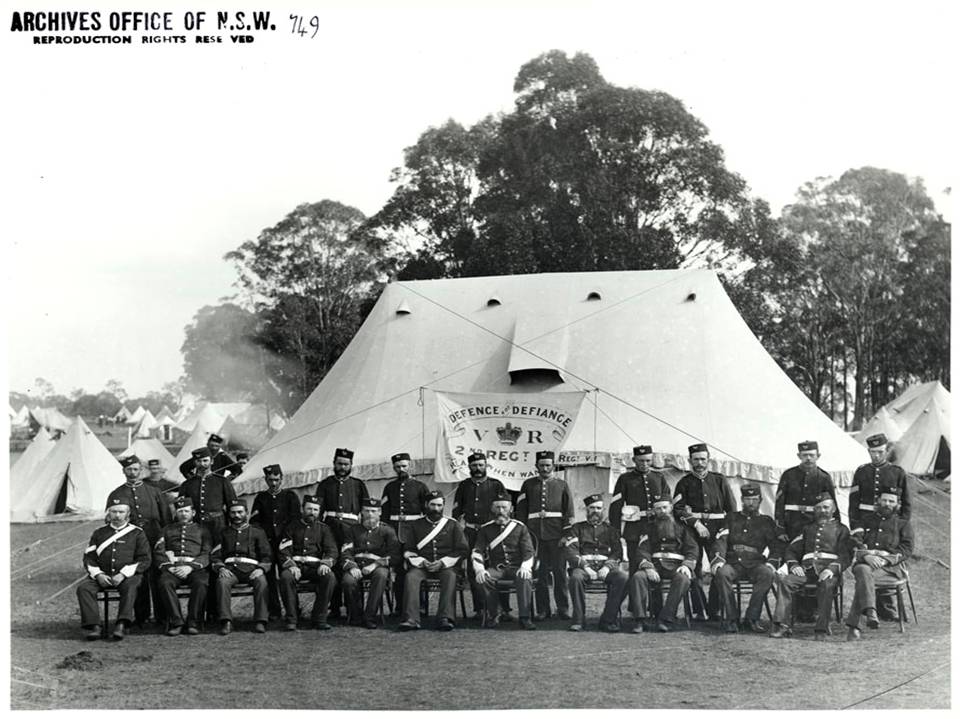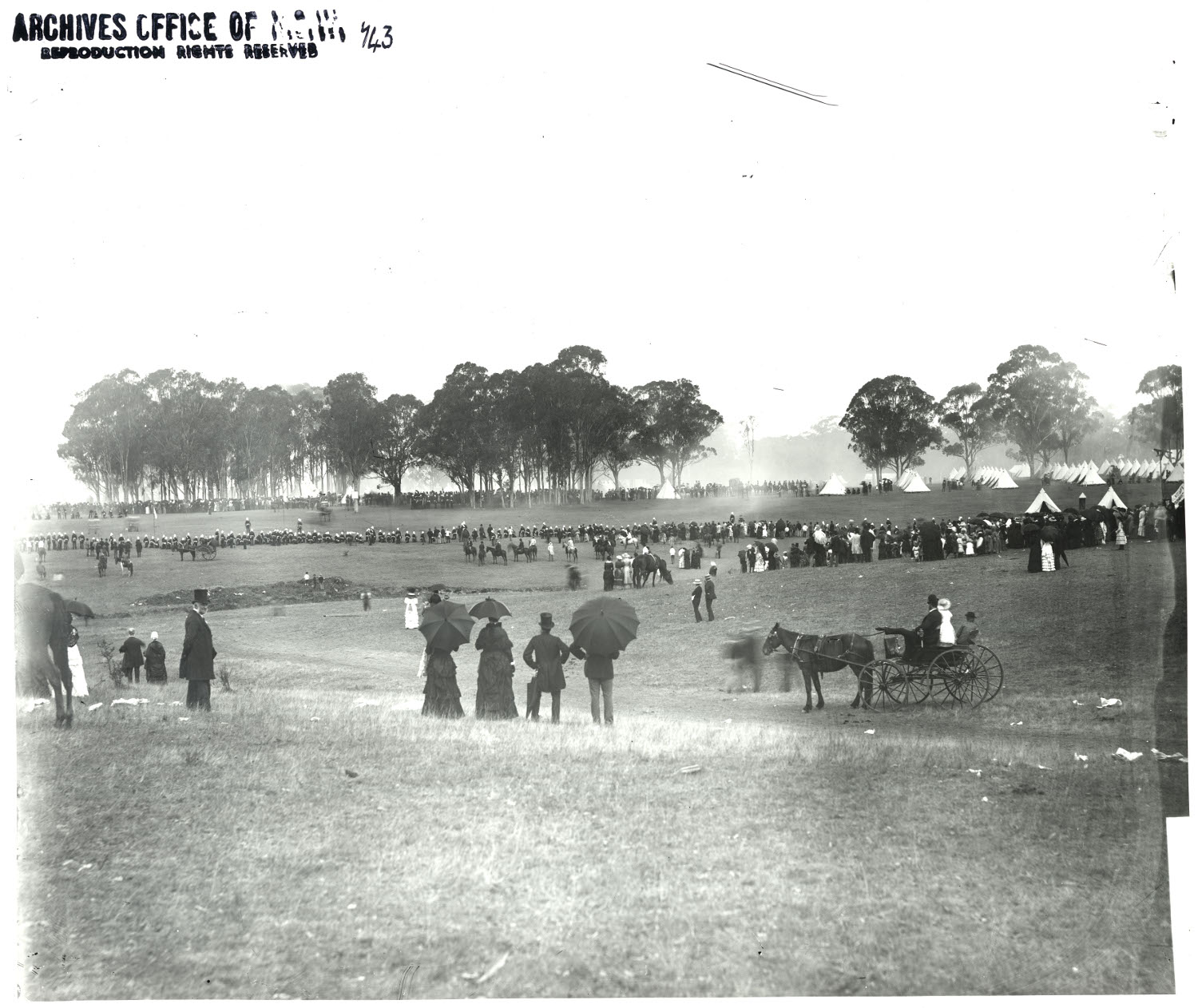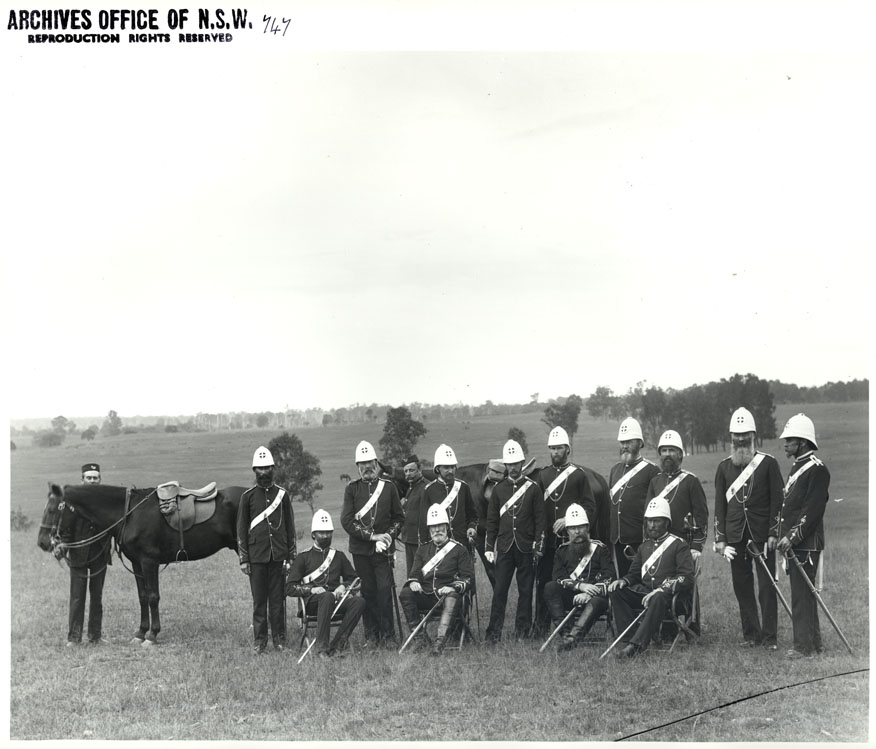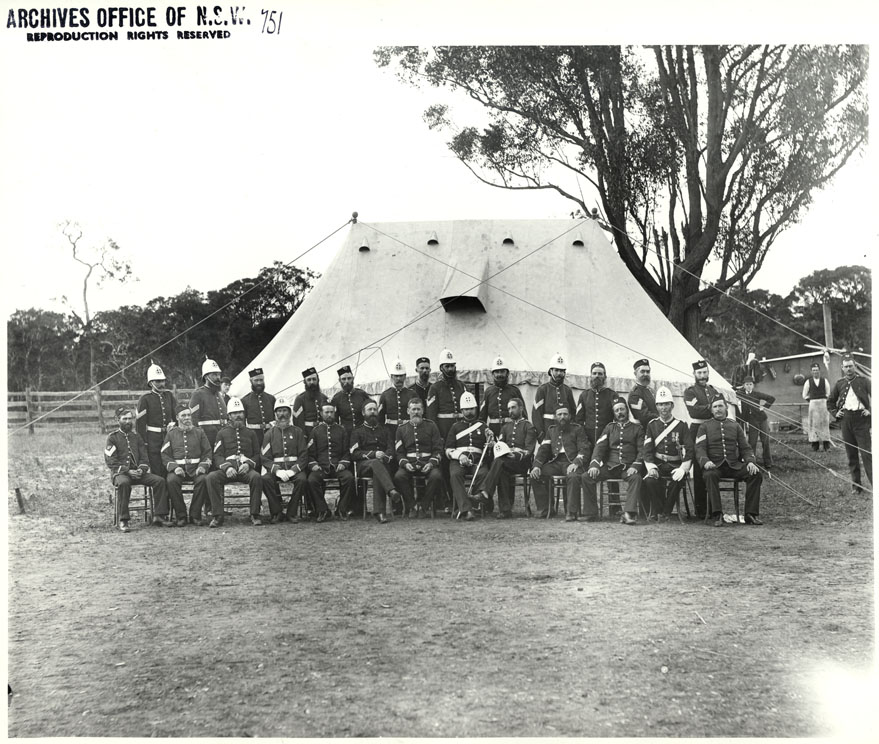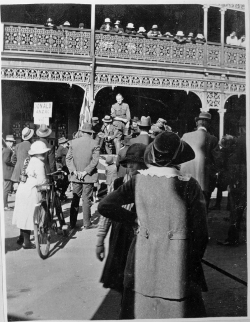Jim Sinclair is the Executive Officer for State Records NSW. He is also a foundation member of “The Razor Gang”, our newly formed fundraising team for the World’s Greatest Shave 2013. This is a charitable event run on behalf of the Leukaemia Foundation. Watch this space for more information! (Editorial note: Go Jim, you’re a legend, we’re all behind you!!)
I have a long-term interest in part-time soldiering in Australia, as I have myself served as a part-time soldier since 1973. I like this image because it represents a forgotten period of part-time soldiering, the late 19th century. After the withdrawal of British troops from the Australian colonies in 1870, the States and Colonies were responsible for providing their own military forces. The image shows Non-Commissioned Officers (NCOs) of what appears to be the 2nd Battalion, NSW Infantry, in the latter years of the 19th century, probably attending an Easter camp. The image is interesting as it shows a group of older men, all sporting beards and the pill box hats which were typical of this period. Even today part-time soldiers are usually older than their Regular Army counterparts. The NCOs are standing in front of a marquee tent, a style which, with minor modifications, remained in use by Australian Army Reserve units until the 1970s
Other military records in our collection
- Additional military photographs from State Records collection can be viewed on Flickr
- Information about the military, war and related collections at State Records can be found on our specialist research page War and Australia (includes the Sudan, Boer War, World War I and World War II).
- The blog A Land Fit For Heroes which is about the Soldier Settlement Program (1916-1939) may also be of interest.
World War I Service Personnel Records
If you are interested in records about World War I Service Personnel then I can also highly recommend Tim Sheratt’s aggregated search engine which covers:
-
service records held by the National Archives of Australia,
-
the Roll of Honour at the Australian War Memorial,
-
the First World War Embarkation Roll at the Australian War Memorial,
-
the Red Cross Missing and Wounded files at the Australian War Memorial,
-
the Honours and Awards database at the Australian War Memorial and
-

